Net Earnings: Increased 9.4% to $1.25 billion
Revenue: Increased 2.5% to $5.57 billion
Operating Income: Increased 2.3% to $1.78 billion
Operating Expenses:Increased 2.5% to $3.79 billion
Operating Ratio: Improved by 2 points to 66.5%
Click here to read BNSF’s full earnings report.
Net Earnings: Increased 6% to C$786 million from C$741 million
Earnings Per Share: Diluted earnings per share increased 8% to C$1.08 from C$1.00 and adjusted diluted EPS increased by 17% to C$1.17
Revenue: Increased by 11% to C$3.5 billion from C$3.2 billion
Operating Income: Increased 5% to C$1.08 billion from C$1.03 billion
Operating Expenses: Increased 14% to C$2.5 billion from C$2.2 billion
Operating Ratio: Worsened by 1.7 points to 69.5%; Adjusted operating ratio improved 0.6 points to 67.2%
Click here to read CN’s full earnings report.
Net Earnings: Increased 25% to C$434 million from C$348 million
Earnings Per Share: Diluted earnings per share increased 28% to $3.09 from $2.41; adjusted diluted earnings per share increased 3% to $2.79 from $2.70
Revenue: Increased 6% to C$1.77 billion from C$1.66 billion
Operating Income: Increased 1% to C$543 million from C$540 million
Operating Expenses: Increased 9% to C$1.2 billion from C$1.1 billion
Operating Ratio: Worsened 180 basis points to 69.3% from 67.5%
Click here to read CP’s full earnings report.
Net Earnings: Increased 20% to $834 million from $695 million
Earnings Per Share: Increased 31% to $1.02 from $0.78 per share
Revenue: Increased 5% to $3.01 billion from $2.9 billion
Operating Income: Increased 17% to $1.22 billion from $1.04 billion
Operating Expenses: Decreased 2% to $1.79 billion from $1.83 billion
Operating Ratio: Improved to a first quarter record of 59.5% from 63.7%
Click here to read CSX’s full earnings report.
Net Earnings: Decreased to $103.2 million from $145 million
Earnings Per Share: Decreased 27% to $1.02 from $1.40; adjusted diluted earnings per share increased 18% to $1.54 from $1.30
Revenue: Increased 6% to a record $675 million from $639 million
Operating Income: Decreased to $160.3 million from $219 million; adjusted operating income increased 10% to a record $242 million
Operating Expenses: Decreased to $514.5 million from $515 million
Operating Ratio: Worsened 10.4 points to 76.2% from 65.8%; adjusted operating ratio improved 1.6 points to 64.2% from 65.8%
Click here to read KCS’s full earnings report.
Net Earnings: Increased 23% to $677 million from $552 million
Earnings Per Share: Diluted earnings per share increased 30% to $2.51 from $1.93
Revenue: Increased 5% to a first-quarter record of $2.8 billion from $2.7 billion
Operating Income: Increased 16% to a first-quarter record of $966 million from $835 million
Operating Expenses: Decreased by $8 million to $1.874 billion from $1.882 billion
Operating Ratio: Improved to a first-quarter record 66.0% from 69.3%
Click here to read NS’s full earnings report.
Net Earnings: Increased 6% to $1.4 billion from $1.3 billion
Earnings Per Share: Increased 15% to $1.93 per diluted share from $1.68 per diluted share
Revenue: Decreased 2% to $5.4 billion from $5.5 billion
Operating Income: Increased 1% to $2.0 billion from $1.93 billion
Operating Expenses: Decreased 3% to $3.4 billion from $3.5 billion
Operating Ratio: Improved 1.0 point to 63.6% from 64.6%
Click here to read UP’s full earnings report.
Net Earnings: Decreased to $38.8 million from $76.0 million
Earnings Per Share: Diluted earnings per share decreased 42.9% to $0.68 from $1.19
Revenue: Increased 2.1% to $332.4 million from $325.6 million
Operating Income: Decreased 5.3% to $69.3 million from $73.2 million; adjusted operating income decreased 4.2% to $70.3 million from $73.4 million
Operating Expenses: Increased to $263.1 million from $252.5 million
Operating Ratio: Worsened to 79.1% from 77.5%; adjusted operating ratio worsened to 78.9% from 77.5%
Click here to read G&W’s full earnings report.
Notes:
- Operating ratio is a railroad’s operating expenses expressed as a percentage of operating revenue, and is considered by economists to be the basic measure of carrier profitability. The lower the operating ratio, the more efficient the railroad.
- All comparisons are made to 2018’s first-quarter results for each railroad.
- Figures for G&W are for North American operations only, with the exception of Net Earnings & Earnings Per Share, which includes all G&W operations, as solely North American figures were unavailable in these categories.
- All figures for CN & CP are in Canadian currency, except for earnings per share for CP



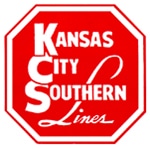
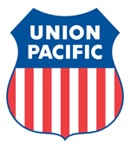
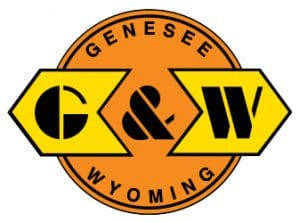
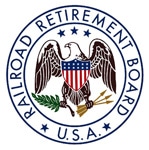 In a recent decision (
In a recent decision (

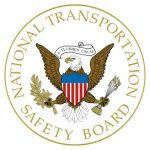 WASHINGTON (Jan. 11, 2018) — The National Transportation Safety Board (NTSB) issued four railroad related safety recommendations in concert with the agency’s publication of two railroad accident briefs Thursday, Jan. 11.
WASHINGTON (Jan. 11, 2018) — The National Transportation Safety Board (NTSB) issued four railroad related safety recommendations in concert with the agency’s publication of two railroad accident briefs Thursday, Jan. 11.